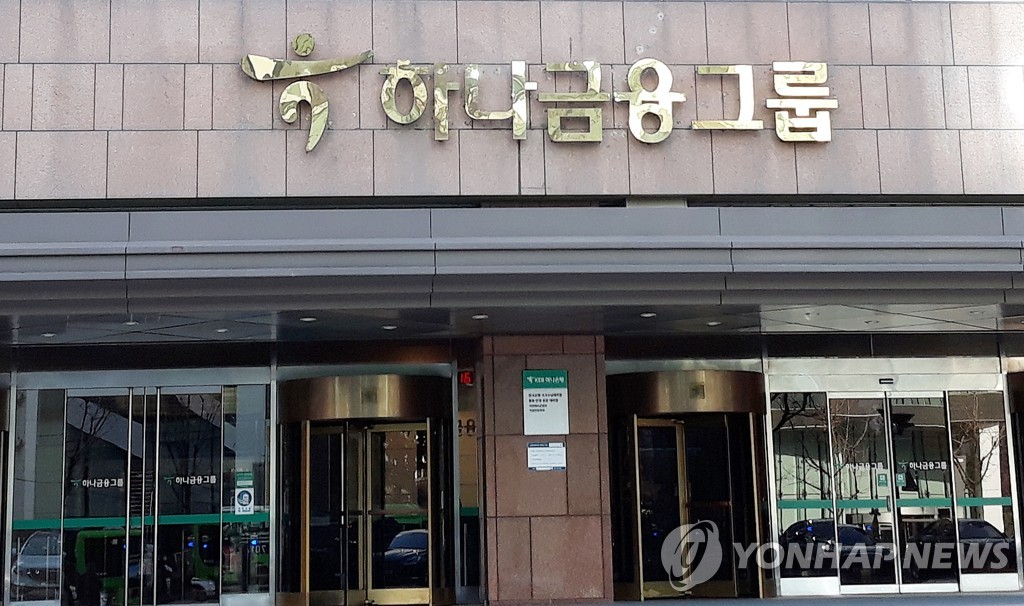Dividend per share 1,350 won… 16% decrease from 2019
(Seoul = Yonhap News) Reporter Kim Yeon-jeong = Hana Financial Group made the largest profit last year due to increased loans and stock investment due to the novel coronavirus infection (Corona 19).
Despite such peak performance, dividend per share fell 16% from 2019, as the dividend payout ratio was lowered to 20% according to the recommendations of the financial authorities last year.
Hana Financial Group[086790]The company announced on the 5th that its annual consolidated net income (based on the net profit of the controlling company’s equity) last year, including KRW 533.2 billion in the fourth quarter of last year, recorded KRW 2.637 trillion. This is an increase of 10.3% (245.7 billion won) compared to the previous year, and is the highest performance since the establishment of the holding company in 2005.
Hana Financial said, “It is a result of the advancement of the non-banking sector and diversification of group business portfolios and sales channels despite the incurred one-off expenses from preemptive provisions for the aftermath of Corona 19, recognition of private equity-related expenses, and special retirement.” Explained.

[하나금융그룹 제공]
The group’s core profit, combined with interest income (5,8143 billion won) and commission income (2,255.7 billion won), was 870 trillion won, an increase of 1.8% (145.4 billion won) from the previous year.
In the fourth quarter of last year, Hana Financial accumulated KRW 276.9 billion in loan loss provisions, and the accumulated loan loss provisions were KRW 877.3 billion, securing the group’s buffering capacity.
In particular, in the fourth quarter following the third quarter of last year, additional provisions for bad debt related to Corona 19 were added, accumulating KRW 337.7 billion per year. In addition, in the fourth quarter following the second quarter of last year, preemptive expenses related to private equity funds were recognized at KRW 112.6 billion, and KRW 220.7 billion was recognized annually.
Asset quality indicators have also improved in general.
At the end of last year, the NPL rate was 0.40%, down 8bp (1bp=0.01% points) from the previous year. The delinquency rate fell 4bp to 0.26%.
Group return on equity (ROE) and total return on assets (ROA), which are indicators of management efficiency, rose from the previous year to 8.96% and 0.61%, respectively.
Despite the special retirement, the group’s sales and management expenses fell 4.6% (189.4 billion won) from the previous year thanks to efforts to reduce costs.
The group’s net interest margin (NIM) for the fourth quarter was 1.54%, and the group’s total assets as of the end of last year were KRW 593 trillion.
Hana Financial Group said, “The decline in NIM reached its bottom in December of last year and is showing a gradual improvement,” and said, “We expect NIM to recover from this January.”

[촬영 안철수]
By subsidiary, Hana Bank, a key affiliate, generated consolidated net income of KRW 2.1 trillion per year, including KRW 355.7 billion in the fourth quarter of last year. This is a decrease of 6.1% (129.7 billion won) from the previous year, and the low interest rate and unfavorable business environment caused by Corona 19 had an impact.
The bank’s core income (6,191 billion won), combined with interest income (5,378 billion won) and commission income (711.3 billion won), decreased by 4.5% (281.3 billion won) from the previous year.
On the other hand, the non-banking sector was remarkable.
Hana Financial Investment achieved net income of KRW 410.9 billion, a 46.6% increase from the previous year as profits such as fees increased due to the increase in stock investment.
Hana Capital posted a net income of 177.2 billion won, a 64.5% increase from the previous year, thanks to the growth of interest income resulting from the increase in superior retail assets.
Hana Card also increased by 174.4% from the previous year to 155.4 billion won, while Hana Asset Trust increased 23.0% to 80.8 billion won, and Hana Life increased 12.3% to 26.6 billion won.
As a result, the proportion of non-banking earnings last year recorded 34.3%, an increase of 10.3 percentage points over the previous year.
On that day, the board of directors of Hana Financial Group decided that the dividend payout ratio in 2020 was 20% and the dividend per share was 1,350 won (1,850 won including interim dividend). Dividend per share decreased by 16% from the previous year due to the reduction in dividend payout ratio.
Hana Financial Group explained, “We have considered a combination of the economic recession and market uncertainty caused by the prolonged Corona 19 crisis, and the financial authorities’ recommendations for payout ratio.”
In a conference call after the announcement of the results, Lee Seung Lee, CFO of Hana Financial Group, emphasized several times that “dividends (reduction) will be applied temporarily, and we ask for the generous understanding of shareholders and investors.” We will do our best to continuously increase shareholder value through shareholder return policies, including interim dividends and ending dividends.”
He said, “We will seek understanding from shareholders who are disappointed by the temporary decline in dividend payout ratio, and we will try to increase shareholder value in various ways, including intermediate dividends that have become a historical tradition.” Yes. If you believe in that, I will prepare to do it enough.”
Regarding the’Basel 3’to be introduced in the first half, Hwang Hyo-sang, CRO, said, “When Basel 3 is introduced, the common stock capital ratio, which has been managed as a target of 12% per year, will be raised to 13%.” We plan to manage it at a level of 13% to secure capital capacity for investment.”
Unauthorized reproduction-redistribution prohibited>
2021/02/05 17:36 sent
